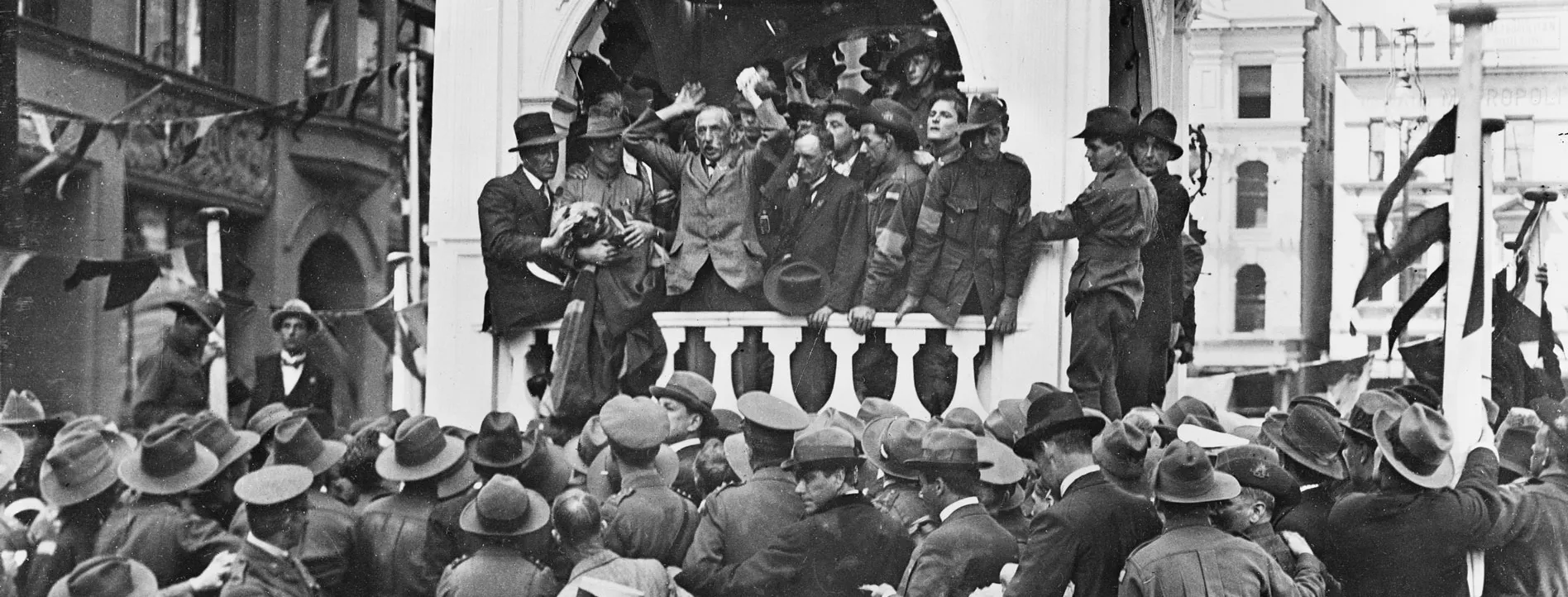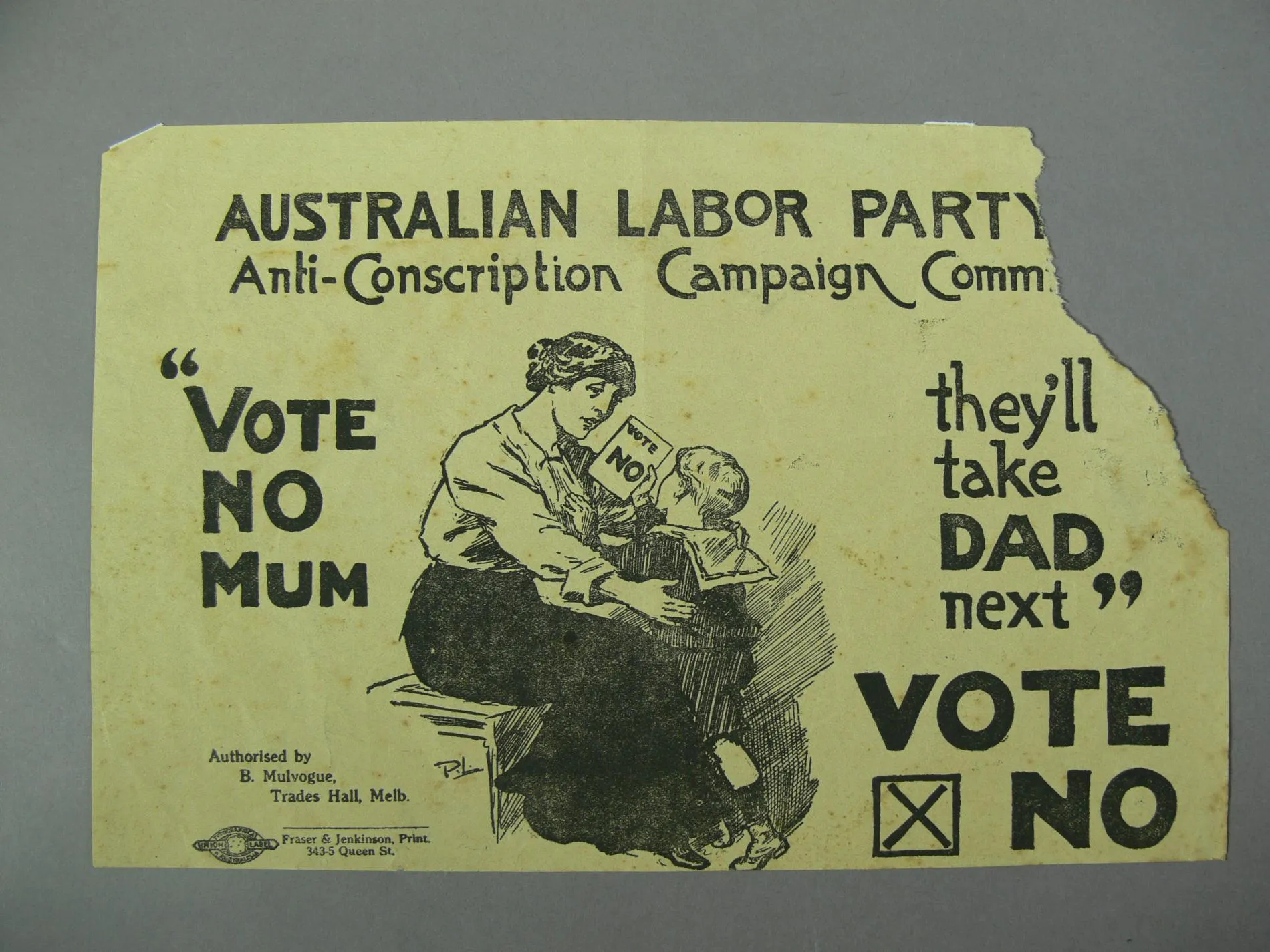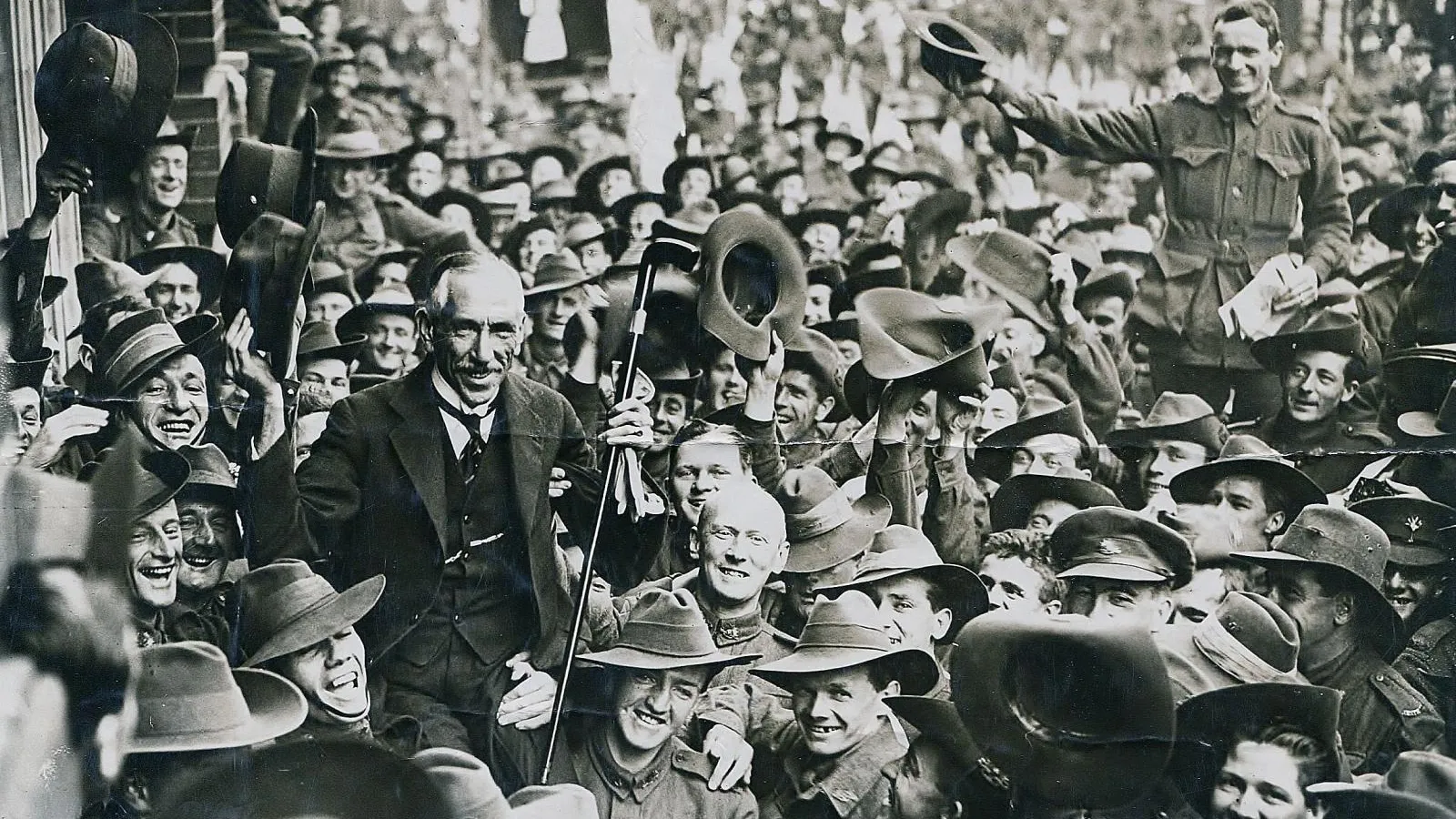Billy Hughes political cartoons
Examine four political cartoons from the First World War about Billy Hughes.
Political cartoons are primary documents that can help us understand issues and attitudes of the past. Look at these four cartoons from the First World War. They are all about Billy Hughes and the decisions that he was making as prime minister. Click on each cartoon to reveal each layer and consider the questions posed as more details are revealed.
The slave market

The slave market
How has the cartoonist drawn Billy Hughes?
Describe his expression.

The slave market
The people behind Billy Hughes are former Labor Party members. What expressions are on their faces?
What is Billy Hughes doing with these men?
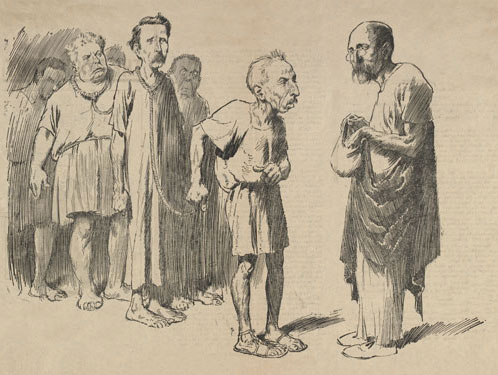
The slave market
The man on the right is Joseph Cook, the leader of the Liberal Party. Compare the way he is dressed to the other men in the cartoon. What does this signify?
Joseph Cook is reaching into a purse. What do you think the two men are discussing? What do you think will happen next?

The slave market
The title of this cartoon is 'The slave market'. Does this fit with your interpretation of the cartoon?
In 1917, Billy Hughes left the Labor Party over the issue of conscription. He and other pro-conscription Labor members of parliament joined in coalition with Joseph Cook and the Liberal Party to form a new government. Billy Hughes continued as prime minister of Australia.
A case where voluntarism seems to have failed

A case where voluntarism seems to have failed
How has the cartoonist drawn Billy Hughes?
What features has he chosen to highlight?
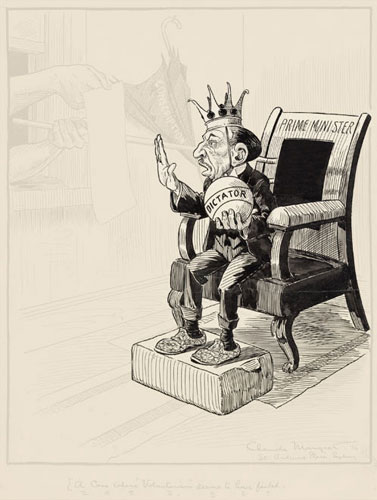
A case where voluntarism seems to have failed
Billy Hughes is sitting in a chair labelled 'prime minister'. He is drawn with royal symbols used for coronations. He is wearing a crown, holding an orb and has his feet on the Stone of Destiny which is used for the coronation of British monarchs. The orb is also labelled with the word 'dictator'. What are the differences and similarities between a monarch, a dictator and a prime minister?

A case where voluntarism seems to have failed
On the wall behind Billy Hughes is an umbrella. Hughes was an umbrella salesman before becoming a politician. The umbrella is labelled conscription. What do you think this means?
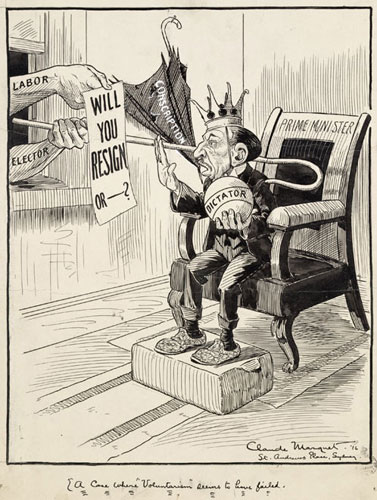
A case where voluntarism seems to have failed
The arms coming through the window represent Labor Party voters. One hand is holding a piece of paper. What is the other hand holding?
On the paper is a question for Billy Hughes: 'Will you resign, or …', what do you think goes in the blank?
Claude Marquet drew this cartoon in 1916. The cartoon refers to Billy Hughes's political past. Billy Hughes was first elected to Federal Parliament in 1901 as a prominent Labor Party member after ten years as a Labor MP in NSW. He became prime minister in October 1915, during the First World War.
Hughes implemented many proposals that were unpopular with Labor Party supporters including the War Precautions Act and conscription. Indeed, his attitude to conscription caused a huge split in the Labor Party. In November 1916, he and other members walked out of a Labor Party meeting. The remaining members passed a motion of no confidence in his leadership.
Liar
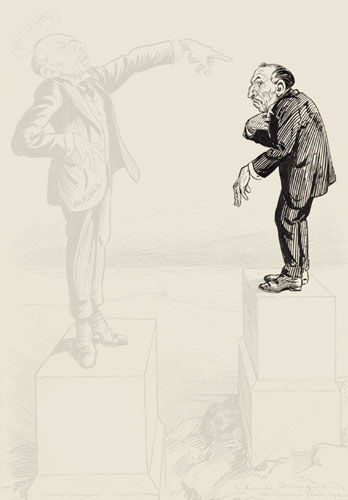
Liar
Compare this caricature of Billy Hughes to his photograph. Look at his facial features, expression and how he is standing. How has the cartoonist chosen to draw him?
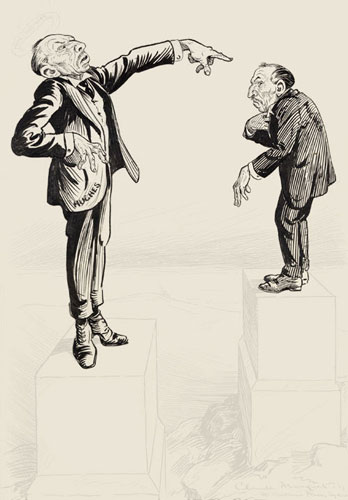
Liar
Describe the differences between the two caricatures of Billy Hughes.
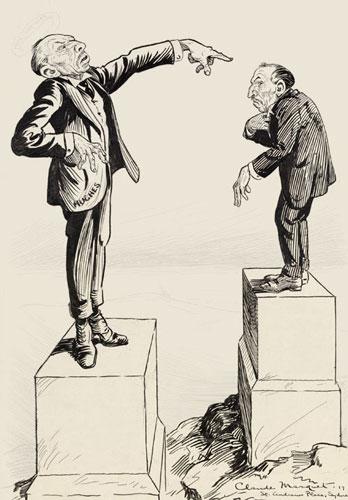
Liar
The cartoonist has drawn the two Billy Hughes on pedestals. What do you think this means?
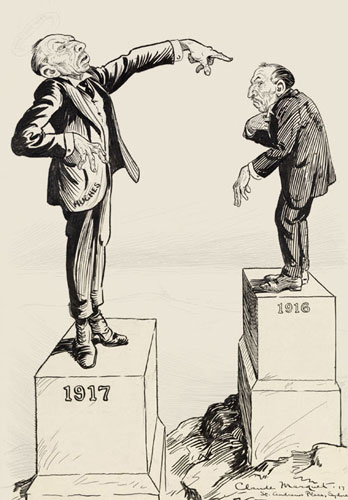
Liar
What was happening in Australia in 1916 and 1917?
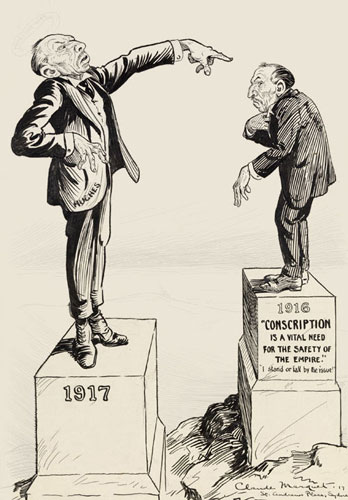
Liar
The cartoonist has written words on the 1916 pedestal to describe Billy Hughes's policy on conscription. What is conscription?
How does Billy Hughes feel about the issue?
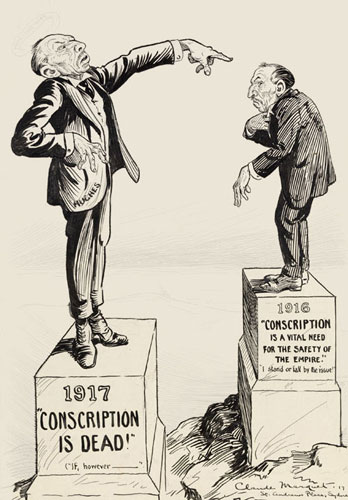
Liar
On the 1917 pedestal is written 'Conscription is dead'. How has Billy Hughes's attitude changed? Think of reasons for this change in attitude.

Liar
What has the cartoonist drawn around Billy Hughes's head?
What does it mean?
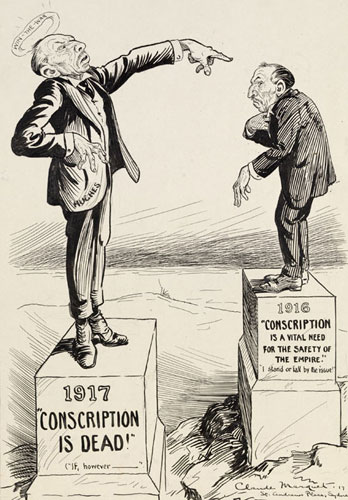
Liar
'Liar' by cartoonist Claude Marquet was created in 1917. The cartoonist makes links between Billy Hughes's statements on conscription in 1916 and 1917.
Billy Hughes campaigned strongly to introduce conscription in 1916. To gain public support, Billy Hughes asked the people of Australia to vote on the issue in a national referendum. He stated that conscription was essential for the Empire. The cartoonist shows his strong stance on conscription by the words 'I stand and fall on this issue'.
When the votes were counted 51% voted against conscription. During the 1917 federal election Billy Hughes stated that he might call another referendum 'If national safety demands it'. A second referendum on conscription was called on 20 December 1917. The referendum failed again, this time more people voted no.
The cloud
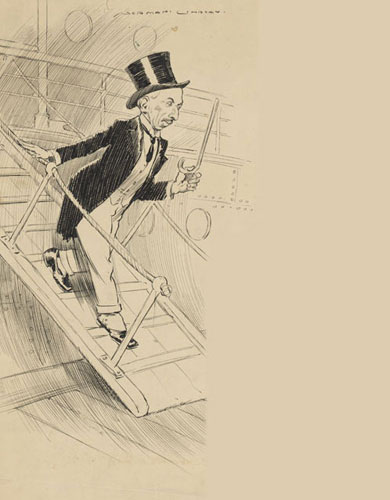
The cloud
What is Billy Hughes doing?
How would you describe his attitude?

The cloud
The second figure is a young boy. After Federation cartoonists often drew Australia as a child. Why?
How would Australia be represented today?
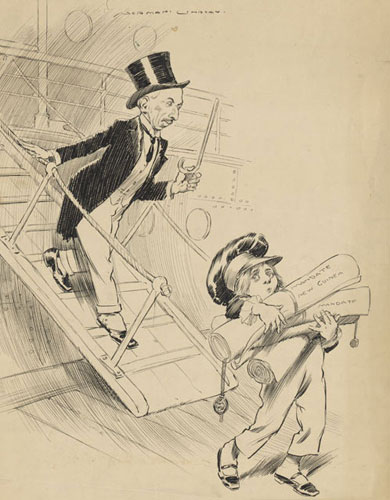
The cloud
What emotions can you see on the boy's face?
Look at the documents the boy is carrying. How would you describe them?
'The cloud' by Norman Lindsay was drawn in 1919 when Billy Hughes returned from the peace negotiations in Europe. Billy Hughes represented Australia at the peace talks. This was the first time that Australia had a direct voice in an international forum. Previously Britain spoke on behalf of Australia's interests.


